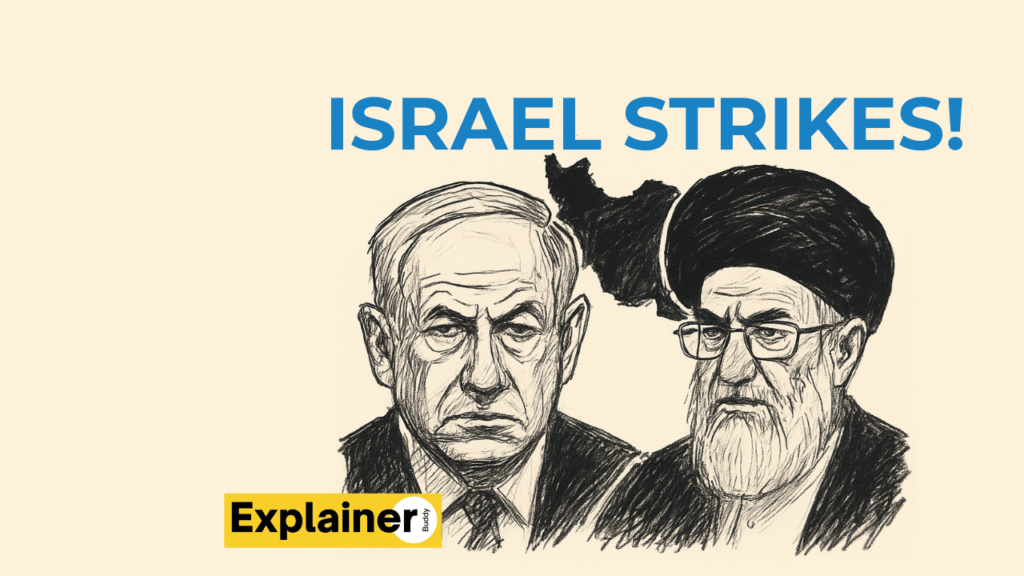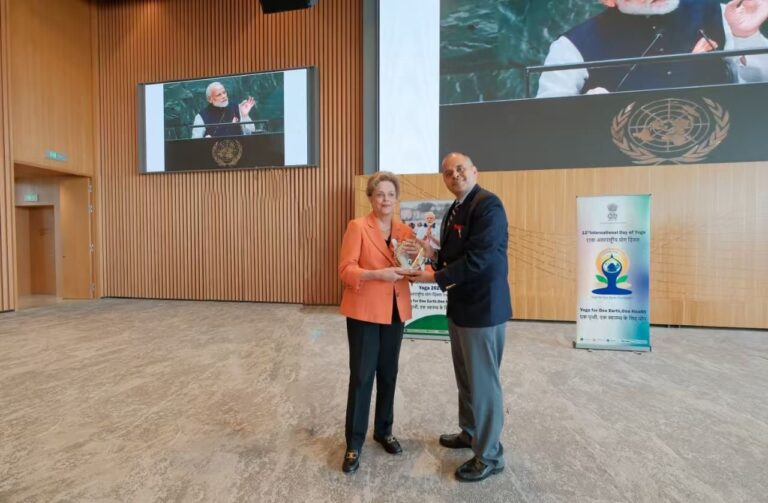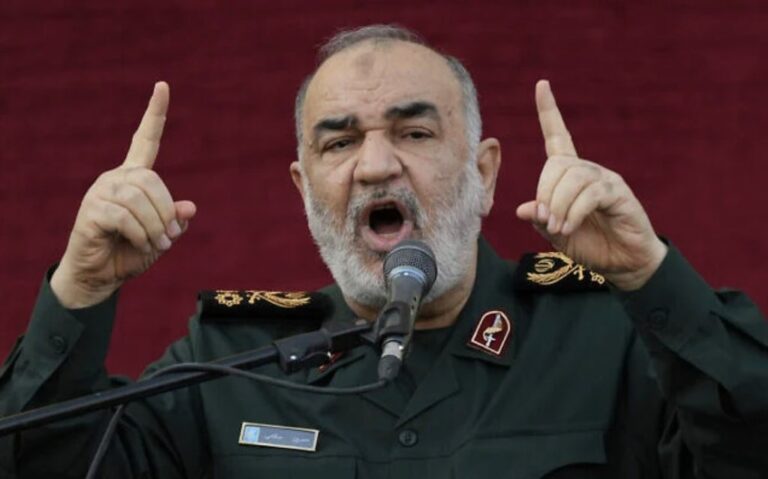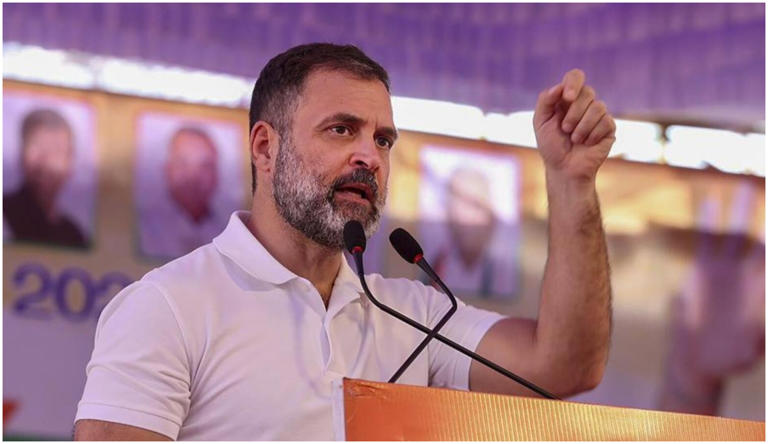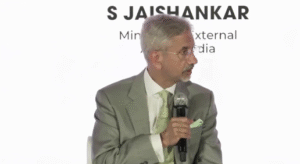Israel Strikes Tehran — But Was This a War Declaration?
At 3:30 AM on June 13, 2025, explosions rocked the Iranian capital of Tehran. Israel had launched Operation Rising Lion — a coordinated, multi-wave strike on Iran’s nuclear and military infrastructure. In the opening salvo alone, over 100 targets were struck, including uranium enrichment sites and residential areas housing top regime officials.
This was not just another airstrike. For the first time in modern history, Israel struck deep inside Iran, killing high-ranking officials and top nuclear scientists — triggering immediate retaliation from Tehran.
With tensions already simmering for decades, this strike may have permanently changed the balance of power in the Middle East. This article explores how this operation was planned, what damage it caused, who retaliated, and why the global response is only just beginning.
Operation Rising Lion: Israel’s Long-Running Dispute with Iran’s Nuclear Program
Israel and Iran have been locked in a shadow war for decades, marked by assassinations, cyberattacks, and proxy battles. But the trigger for Operation Rising Lion came after a series of intelligence assessments by Israel claiming that Iran had enriched enough uranium to build at least nine nuclear bombs.
Though U.S. intelligence agencies maintain that Iran halted its weapons program in 2003, Israeli Prime Minister Benjamin Netanyahu publicly declared that new evidence showed Iran was within months of weaponization. The strike also came amid the breakdown of U.S.-Iran nuclear talks scheduled in Oman, increasing fears that diplomacy had collapsed entirely.
Key figures involved early:
Benjamin Netanyahu – PM of Israel, authorized the operation
Hossein Salami – Chief of Iran’s IRGC, killed in the strike
Ali Shamkhani – Iran’s former National Security Chief, also confirmed dead
Donald Trump – U.S. President, not involved in the operation but pushed diplomacy
How Israel Struck Iran’s Nuclear Sites and IRGC Leaders
Israel’s Operation Rising Lion officially began with a televised announcement from Prime Minister Benjamin Netanyahu. Standing before the national flag, Netanyahu declared, “We will not allow Iran to develop nuclear weapons. This is a fight for our future.” He framed the mission as a “targeted defensive operation” and emphasized that Israel would continue the campaign “for as many days as it takes” until Iran’s nuclear capabilities were neutralized. The tone was unmistakable — Israel was drawing a red line and enforcing it with military force.
#WATCH | Israel Prime Minister Benjamin Netanyahu says, "Moments ago, Israel launched Operation Rising Lion, a targeted military operation to roll back the Iranian threat to Israel's very survival. This operation will continue for as many days as it takes to remove this… pic.twitter.com/hY3kEfTYZ3
— ANI (@ANI) June 13, 2025
The operation’s primary focus was Iran’s nuclear infrastructure. Strikes were confirmed on the Natanz enrichment facility, one of Iran’s most fortified nuclear sites located south of Tehran. Additional precision-guided bombings hit key locations in Khondab and Khorramabad, where Iran’s centrifuge and uranium development programs are believed to be based. Israel also targeted ballistic missile factories, drone command centers, and strategic depots used by the Islamic Revolutionary Guard Corps (IRGC). Perhaps most symbolic was the strike on Tehran’s Mahallati district — a neighborhood that houses senior regime figures and IRGC leadership.
The human toll from these strikes was immediately apparent. Iranian state media confirmed the deaths of over 40 high-ranking officials, including IRGC chief Hossein Salami, former National Security Council head Ali Shamkhani, and top nuclear scientists Fereydoun Abbasi and Mohammad Mehdi Tehranchi. Residential areas were also affected — especially near the BJ Medical Complex, where reports indicated that several civilians, including children, had been killed. The scale of the operation signaled that Israel intended not just to cripple Iran’s infrastructure but also to disrupt its nuclear command hierarchy.
Iran's chief of staff Mohammad Bagheri has been killed in a precision strike by Israel, say unconfirmed reports.
— Abhijit Majumder (@abhijitmajumder) June 13, 2025
His building was hit by a missile.
IRGC top brass under fire in Israel’s #OperationRisingLion.
Israel must finish the job, liberate Iranians from the ayatollah regime. pic.twitter.com/t3DR9cNEW0
🚨BREAKING
— 𓄂✺Yaar - يار قدیمی🎗️ (@YaarGhadimi) June 13, 2025
Israel just hit the home of a top IRGC commander in Mahallati, #Tehran, a neighborhood full of regime elites.
Iranians on social media are celebrating hard🎉. Thanks, #Israel! pic.twitter.com/RVndYYH6wJ
#BREAKING Jet noises, air defense, multiple explosions, and ground shaking in east, west, and central #Tehran/#Iran
— 𓄂✺Yaar - يار قدیمی🎗️ (@YaarGhadimi) June 13, 2025
Israelis are here!
Shalom @khamenei_ir! 😂 pic.twitter.com/55K9YyAQp0
Inside Tehran, the aftermath was chaos. Videos on social media showed billows of black smoke rising from multiple locations across the city. Sirens wailed through the night as residents scrambled for safety. Some of the most widely circulated videos, however, were later flagged as misattributed, with fact-checkers identifying older or unrelated footage, including scenes from southern Lebanon. Nevertheless, the verified destruction and psychological shock in Tehran were undeniable — marking one of the most significant military escalations between Israel and Iran in modern history.
Isreal’s attack has made a dusty volcano out of Nuclear sites in Iran. Karmenshah.pic.twitter.com/lF4N10QLea
— Crystal Clear (@Crystal_x_Clear) June 13, 2025
Iran’s Retaliation to Israeli Airstrikes: Drone Swarms, Missile Threats, and Regional Escalation
Iran wasted no time in responding to Israel’s Operation Rising Lion. Within hours of the airstrikes, Tehran launched over 100 drones targeting both Israeli military bases and civilian population centers. Iranian state television broadcasted fiery declarations from top officials, vowing “revenge against Zionist crimes” and promising a “wave of missile and UAV retaliation.” The attacks triggered a full-scale activation of Israel’s Iron Dome and David’s Sling missile defense systems, which were observed intercepting projectiles over several southern and central districts.
BREAKING:
— Visegrád 24 (@visegrad24) June 13, 2025
More than 100 suicide drones have been launched against Israel from Iran and Yemen.
Israeli, British and American fighter jets are in the process of shooting them down.
🇮🇱🇬🇧🇺🇸 pic.twitter.com/IGKw4CsmVu
Though not directly involved in the strikes, the United States had been informed in advance. Secretary of State Marco Rubio clarified that U.S. forces would not participate in Israel’s operation but confirmed that American troops across the Middle East were placed on high alert to defend against potential spillover. Meanwhile, key U.S. allies — including Australia, France, Japan, and the United Kingdom — issued travel advisories, raised threat levels, and mobilized military assets across their respective bases in the region, signaling broader international concern about a possible escalation into regional war.
Inside Iran, the atmosphere remained tense and tightly controlled. The government imposed a full airspace closure over Tehran and Esfahan, grounding all domestic and international flights. Iranian media outlets observed a total blackout on detailed casualty reports and damage assessments, with only heavily filtered updates released to the public. In a rare and emotional statement, Supreme Leader Ayatollah Khamenei called the Israeli strikes a “massacre of Iran’s sovereignty,” fueling nationalist sentiment and framing the conflict as a direct assault on the nation’s dignity and independence.
What Operation Rising Lion Means for the Middle East, Oil Markets, and Diplomacy
The geopolitical fallout from Operation Rising Lion has been immediate and far-reaching. For many analysts, the Iran-Israel conflict has now crossed the point of no return. What was once a covert, slow-burn standoff has erupted into direct military confrontation with the potential to spiral into a regional war. Diplomatic negotiations between the U.S. and Iran — previously progressing through indirect talks in Oman — have been suspended indefinitely. There is also a growing risk of proxy retaliation from Iran-backed groups such as Hezbollah in Lebanon, the Houthis in Yemen, and Shia militias operating in Iraq and Syria, which could ignite parallel conflicts across multiple borders.
The economic consequences have rippled across global markets. Within hours of the airstrikes, oil prices surged 6–8%, reflecting investor panic over potential disruptions in the Strait of Hormuz, a key chokepoint for global energy supplies. The Dow Jones dropped 600 points, while the Nasdaq and S&P 500 fell 1.8% and 1.6%, respectively. The shockwaves also reached Asia, with Japan’s Nikkei and South Korea’s Kospi experiencing steep declines. The market’s volatility underscores how deeply intertwined Middle Eastern security is with global economic stability.
On the civilian front, the human cost and cultural response have been complex. Both Israeli and Iranian civilians are now preparing for prolonged periods of insecurity, with mass evacuations, panic buying, and school closures reported in several regions. While grief and anger dominate public sentiment in Iran, there is also a striking countercurrent — some Iranians on social media expressed joy at the death of elite IRGC commanders, hinting at a growing internal divide between regime loyalists and everyday citizens disillusioned with Tehran’s hardline leadership.
Operation Rising Lion marks one of the most strategic, deadly, and high-risk airstrikes in Israeli history. It destroyed Iran’s most secure nuclear facilities, eliminated top IRGC leadership, and sent a message far beyond the region. But it also opened the floodgates. As drones fly, missiles prepare for launch, and allies reposition their forces, the world is watching a new chapter of Middle East history unfold. Whether this becomes a contained operation or a regional war now depends on what both Iran and Israel choose to do next — and whether global diplomacy can catch up in time.


